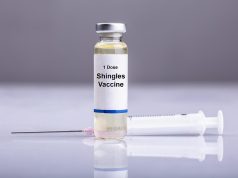No reduction in hazard ratio for influenza A or B virus with LAIV in study among Hutterite children
TUESDAY, Aug. 16, 2016 (HealthDay News) — Immunizing children with intranasal live attenuated influenza vaccine (LAIV) does not appear to provide better protection against influenza than inactivated influenza vaccine (IIV), according to a study published online Aug. 16 in the Annals of Internal Medicine.
Mark Loeb, M.D., from McMaster University in Hamilton, Canada, and colleagues conducted a cluster randomized blinded trial over three influenza seasons in 52 Hutterite colonies in Canada. The study population comprised 1,186 Canadian children and adolescents aged 36 months to 15 years who received the study vaccine, and 3,425 community members who did not receive the vaccine. Children were randomized according to community to receive standard dosing of trivalent LAIV or trivalent IIV.
The researchers found that the mean vaccine coverage was 76.7 and 72.4 percent among children in the LAIV and IIV groups, respectively. Influenza virus infection occurred at a rate of 5.3 and 5.2 percent in the LAIV and IIV groups, respectively. For influenza A or B virus, the hazard ratio comparing LAIV with IIV was 1.03 (95 percent confidence interval, 0.85 to 1.24).
“Immunizing children with LAIV does not provide better community protection against influenza than IIV,” the authors write.
One author disclosed financial ties to the pharmaceutical industry.
Full Text (subscription or payment may be required)
Copyright © 2016 HealthDay. All rights reserved.








